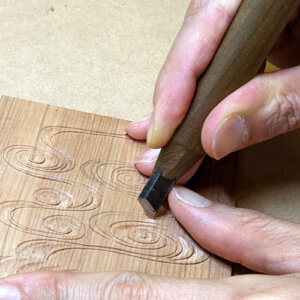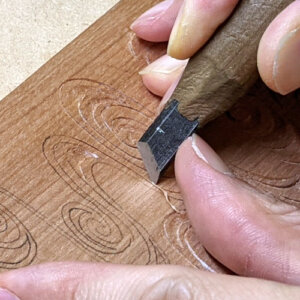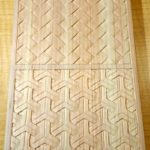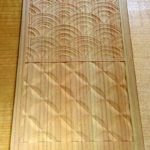How to carve patterns part 7 ~Ryusui~

“Ryusui” (流水文) is a classic Japanese motif that represents the graceful, winding flow of water.
You might even recognize this pattern from traditional folding fans!
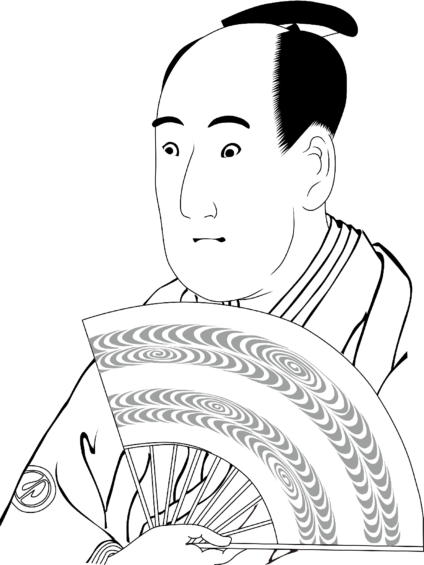
In this tutorial, we’ll carve two variations of the Ryusui pattern.

Tools Used
-
Sharp chisel (Kiwa-gatana)
-
Shallow round chisel (Asamaru-gatana)
-
Round chisel (Maru-gatana)
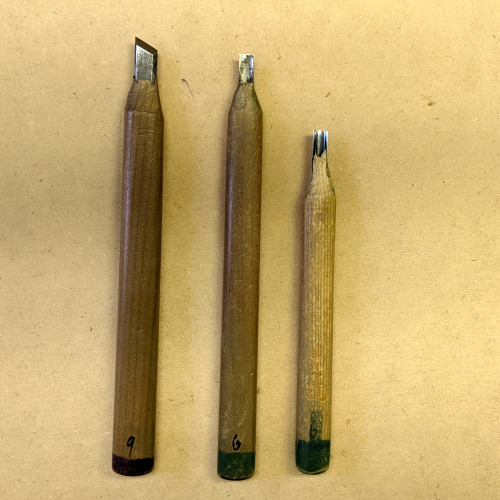
Preparation
Use carbon paper to transfer the Ryusui design onto a postcard-sized wooden board.
You can download the sketch from here: [Ryusui PDF)].
Let’s begin!
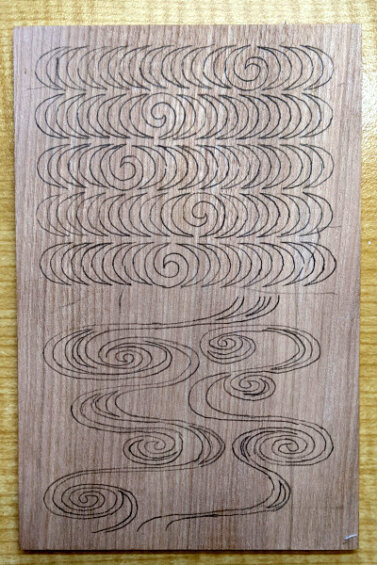
1. How to carve flowing water 1
Step 1: Incisions
Using a sharp chisel, follow the red arrow lines in the design.
Start shallow and deepen the incision gradually in the direction of the arrow to give a sense of natural flow.
.png)
This is what the cross-section will look like:
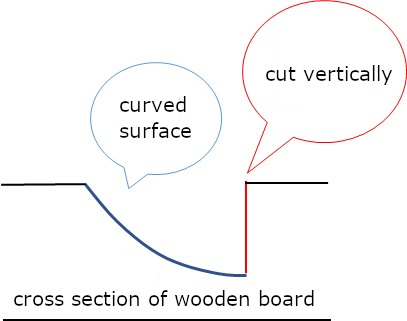
Step 3: Finish
Continue carving smoothly and carefully until the sketch disappears.
Take your time—this pattern is all about elegance and fluid motion.
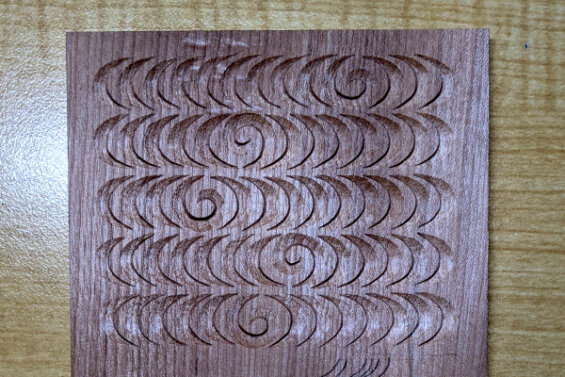
2.How to carve flowing water 2
This version uses a similar method to the first but adds more line work for variation.
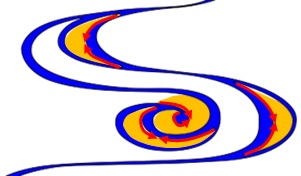
Step 1: Incisions
Just like in Pattern 1, make incisions with the sharp chisel along the red lines, getting deeper in the direction of the arrows.
Step 2: Smooth Slopes
Use a shallow round chisel or a round chisel to carve the orange areas into soft, curved surfaces that intersect with your incisions.
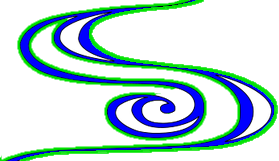
Step 3: Carve V-shaped Lines
Now we add some elegant line work:
-
Use the sharp chisel to carve V-shaped grooves along the green lines.
-
Start with a cut at your desired depth and angle, then make another cut from the opposite side to meet it, forming a clean V.
💡 The thickness and clarity of each line depend on your chisel angle and cutting depth.
Experiment with it — but try to keep the V-shaped lines flowing naturally. Avoid choppy or wobbly edges that break the pattern's rhythm.

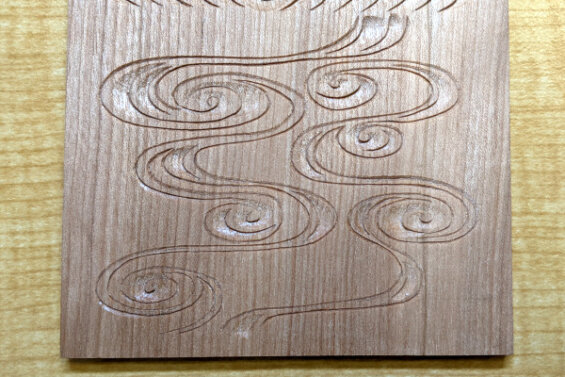
How to carve patterns
- From the lattice to the scales
- Raimon
- Asanoha and Sayagata
- Seigaiha and Sippo-Tsunagi
- Higaki and Kumikikko
- Mimasu-Tsunagi and Mimasu-Chirashi
- Ryusui ←Current page displayed
- Bundo-Tsunagi and Tatewaku
- Yamajimon and Misujidate
- Kemanmon and Gobosei
- Chidori and Chidori-Goshi
- Nejiume (Twisted plum)
- Kikubishi and Yaegiku
- Ichimatsu and Sankuzushi
- Kikko and Yagasuri
- Clouds
- Waves

-300x240.png)
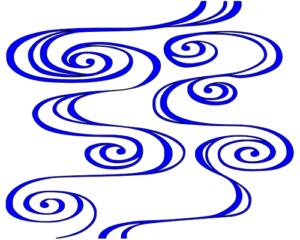
_キワ刀で切り込み-300x300.jpg)
_浅丸で滑らな曲面になるように彫る-300x300.jpg)


